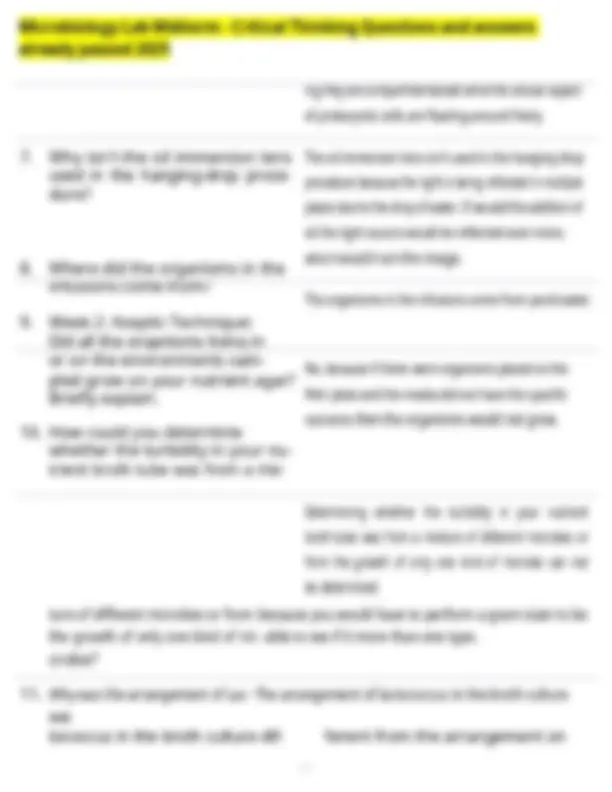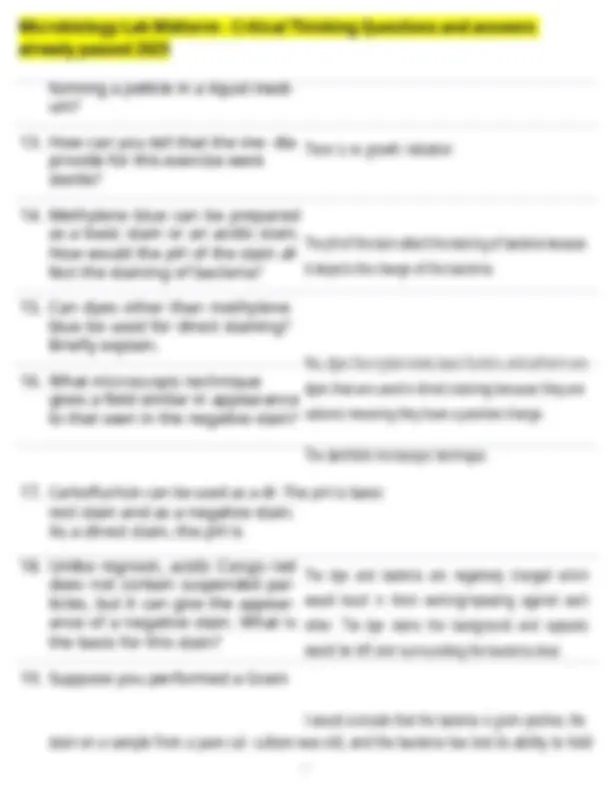





Study with the several resources on Docsity

Earn points by helping other students or get them with a premium plan


Prepare for your exams
Study with the several resources on Docsity

Earn points to download
Earn points by helping other students or get them with a premium plan
Community
Ask the community for help and clear up your study doubts
Discover the best universities in your country according to Docsity users
Free resources
Download our free guides on studying techniques, anxiety management strategies, and thesis advice from Docsity tutors
Microbiology Lab Midterm - Critical Thinking Questions and answers already passed 2025
Typology: Exams
1 / 7

This page cannot be seen from the preview
Don't miss anything!




already passed 2025
already passed 2025 stained mi- crobes. They are transparent meaning they blend in with their surroundings, and since they are motile they can not be focused on. Yes you can distinguish the prokaryotic organisms from otic organisms from the eukaryot- the eukaryotic organisms because the cells of eukaryotic ic organisms? organisms have organelles bound by membranes mean-
already passed 2025 ditterent from the arrangement on the slant culture in the second period because there was more space for a binary the slant culture in the second pe- fission in the broth. riod?
already passed 2025 forming a pellicle in a liquid medi- um?
already passed 2025 field of red and purple cocci. Ad- jacent cells were not always the same color. What would you con- clude?